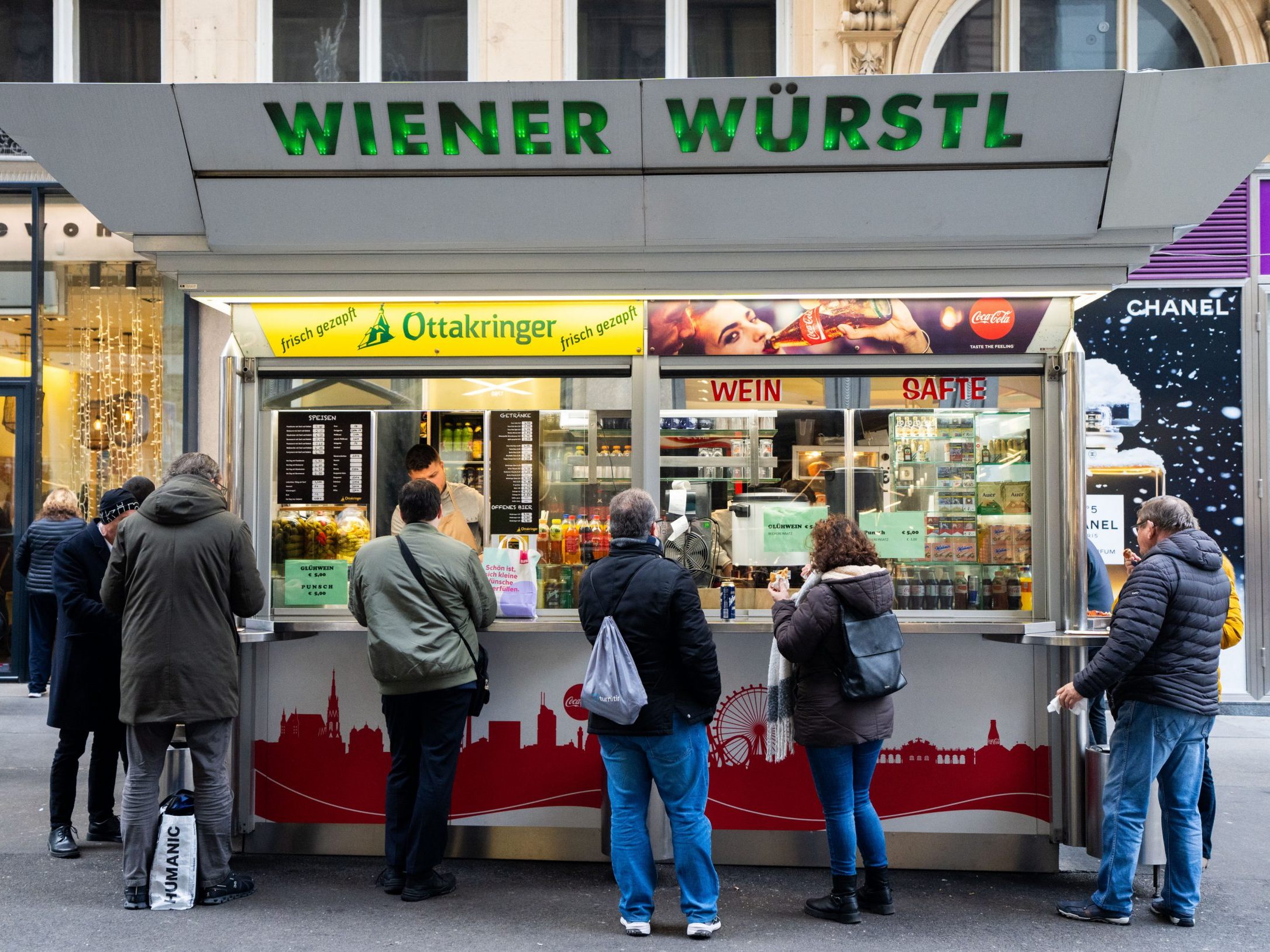Viennese Sausage Stands Rise to Intangible World Heritage Status

In addition to the freestanding stand, UNESCO justified this with the offer, the atmosphere and the vocabulary that has formed around the snack stands. This officially includes terms like the "Haaße" (Burenwurst), the "Krokodü" (pickle or delicacy cucumber) and the "Oaschpfeiferl" (hot pepperoni).
Viennese Sausage Stands Made it to Intangible World Heritage
"This unique institution now joins the society of Viennese coffee house and wine tavern culture and underlines the importance of sausage stands as places of encounter, culinary diversity and Viennese lifestyle," said a statement from the city on Wednesday. "The Viennese sausage stand is not only a place of culinary delights, but also a living symbol of Viennese lifestyle. Its appointment as an intangible cultural heritage honors the tradition, hospitality and diversity of our city," commented the delighted Mayor Michael Ludwig (SPÖ).
Walter Ruck, President of the Vienna Chamber of Commerce, was also pleased about the honor for the culinary asset: "The fact that UNESCO now awards the Viennese sausage stand as a cultural heritage is a beautiful confirmation of the work of our stand operators and more than deserved. The sausage stands are as much a part of Vienna as the wine taverns and coffee houses. They are not only a culinary institution, but also social meeting points. And many stand operators not only rely on tradition, but also develop their trade through new offers."
"Bitzinger Brought a Magnum Bottle of Champagne"
The "schoafen René" and his colleagues naturally felt like celebrating on Wednesday, albeit only partially in a manner befitting their status: "Bitzinger (stand operator among others in front of the Albertina, note) brought a magnum bottle of champagne," said René Kachlir, operator of the stand at Schwarzenbergplatz, to APA. There were also cheese sausages (Eitrige), "that slides". Kachlir particularly praised his colleague Patricia Pölzl, who runs the sausage stand "eh scho wuascht" at the central cemetery. She wrote the application in a perfect way, so that UNESCO, with its high requirements, had no choice but to approve the application.
The history of the Viennese sausage stands goes back to the time of the monarchy, where mobile kitchens offered veterans a source of income. With the permission of fixed locations from 1969, the institution continued to develop and shapes the everyday life of the city. The snack at Bitzinger at the Albertina after visiting the State Opera is just as much a part of it as the quick snack for shift workers. Thus, the sausage stands are also places where social barriers disappear.
Sausage Stands Also Found in Literature
The sausage stands have meanwhile also entered Viennese culture. They can be found in literature in Friedrich Torberg's "Tante Jolesch" and HC Artmann's "In the Shadow of the Burenwurscht" and were honored in a legendary way in Elisabeth T. Spira's "Everyday Stories". The oldest still existing stand is the "Sausage Stand Leo" at Döblinger Gürtel, which opened in 1928, according to the city.
It is also clear despite the intangible world heritage: Anyone who orders an "Eitrige with a Gschissenen (sweet mustard, note), a Bugl (bread roll, note) and a Blech (a can of beer, note)" at the sausage stand, outs themselves as a tourist who has googled a bit too much in advance.
(APA/Red)
This article has been automatically translated, read the original article here.





